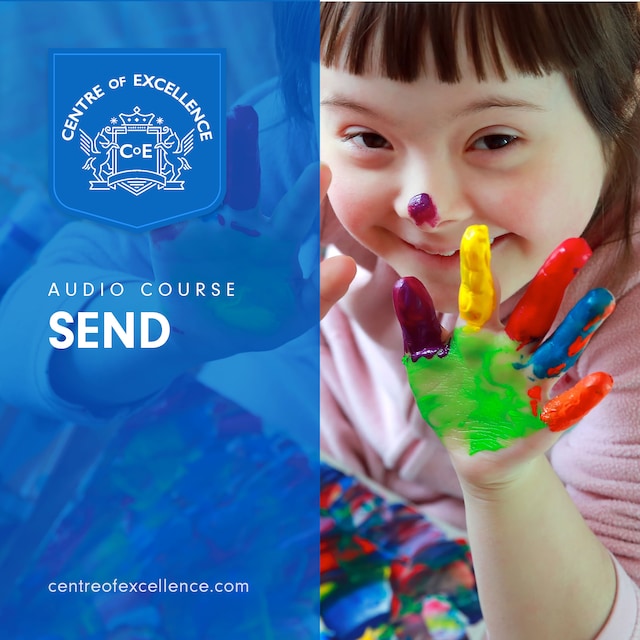
Special Educational Needs and Disability
Description of book
The Special Educational Needs and Disability (SEND) Course is designed to arm its students with a comprehensive knowledge that will enable them to utilises a variety of teaching methods and practices to suit the different preferred learning styles of the children they teach.
Every child is different and has their own unique pattern of how they learn about the world around them. Good classroom teaching should use a variety of teaching methods to reflect the different preferred learning styles of the children in the class, and to enable every child to be able to engage in learning.
When a child has special educational needs or a disability, learning can be much harder and it doesn’t always happen as easily as it does for other children. Different styles of teaching, resources, additional equipment, or adaptations to the classroom may have to be made to enable children with additional needs in order for them to reach their full potential.
SEND – Special Educational Needs and Disability
Special Educational Needs and Disability is abbreviated to SEND, and this term will be used throughout this and the following modules of this course.
SEND education takes place in the context of current legislation, so the way it is implemented will alter from one country to the next, however, many of the principles are similar and there are commonalities in terms of best practice regardless of location.
UK Legislation
In the UK, Education Law is devolved to each of the four countries within the union, so there are differences in how SEND education is administered in England, Wales, Scotland and Northern Ireland.
Recent SEND reforms in England
In England, The Children and Families Act 2014 became law in September 2014. Part Three of this Act is entirely about SEND, and has made significant legislative changes, which have completely changed the framework in which children with additional needs are educated. It is a completely fresh approach with an emphasis on person-centred learning, raising expectations, and giving parents and children a much greater level of control in the decision-making process.
These SEND reforms have been described by many as “radical”, and because they are so far-reaching, it will take until September 2018 to fully implement. Until then, aspects of the previous legal framework will still be in operation alongside the new system.
Although this new legislation only applies to England at the moment, other parts of the UK are looking to introduce similar reforms soon. These reforms are the result of changes in perception, thinking and attitudes towards disability, legislation which promotes principles of equality, inclusion and prevention of disability discrimination, and based on evidence-based research regarding achieving the best outcomes for children with SEND.
What is a Special Educational Need or Disability?
The term “Special Educational Needs” has a legal definition that is covered by both The Education Act of 1996 and the more recent Children and Families Act of 2014. To have a Special Educational Need, a child must have a learning difficulty or learning disability that makes it significantly harder for them to learn or to access education compared to most children of the same age.
The term “Disability” also has a legal definition under the Equality Act 2010. A person has a disability if they have a physical or a mental impairment that has a “substantial” and “long-term” negative effect on their ability to do normal daily activities.
The terms “Substantial” and “Long-Term” are also defined within the same Act as being:
Substantial – more than minor or trivial. For instance, it would take someone significantly longer to complete a normal daily task such as getting dressed.
Long-term – is defined as lasting for more than 12 months.
Altogether, around 16% of all children and young people will be identified as having some form of SEN at some stage during their education, although most of them will have their educational needs successfully met within the mainstream classroom. Just over 1% of children will have a level of SEN that is so significant that they may need a specialist educational provision, such as attending a special school.
The is a lot of cross-over between special educational needs and disability, and many children who have a disability will also have an additional special educational need. However, this isn’t always the case, and every child’s need should be addressed individually.
There are many different types of educational need, and even with children who have broadly similar needs, the approaches each child will benefit from may vary widely. Here are some of the types of need that the term SEN covers:
A specific learning difficulty, such as dyslexia, dysgraphia, dyspraxia or Attention Deficit Hyperactivity Disorder
A learning disability, which can be mild, moderate, severe or profound and multiple
A Speech and Language Disorder
A Sensory Processing Disorder
An Autistic Spectrum Disorder
A behavioural, emotional or social difficulty
There is sometimes confusion over the terms “Learning Difficulty” and “Learning Disability”. A learning difficulty normally refers to a specific aspect of learning, such as Dyslexia which affects the acquisition of reading skills. A Learning Disability normally refers to an Intellectual Impairment and there are different levels of Learning Disability depending on severity, ranging from Mild to Profound and Multiple.
However, many children have both a Learning Disability and at least one Learning Difficulty, as well as other disabilities or medical conditions.
What other people think
Reviews of Special Educational Needs and Disability
Book
There are not enough ratings yet
Narration
There are not enough ratings yet


